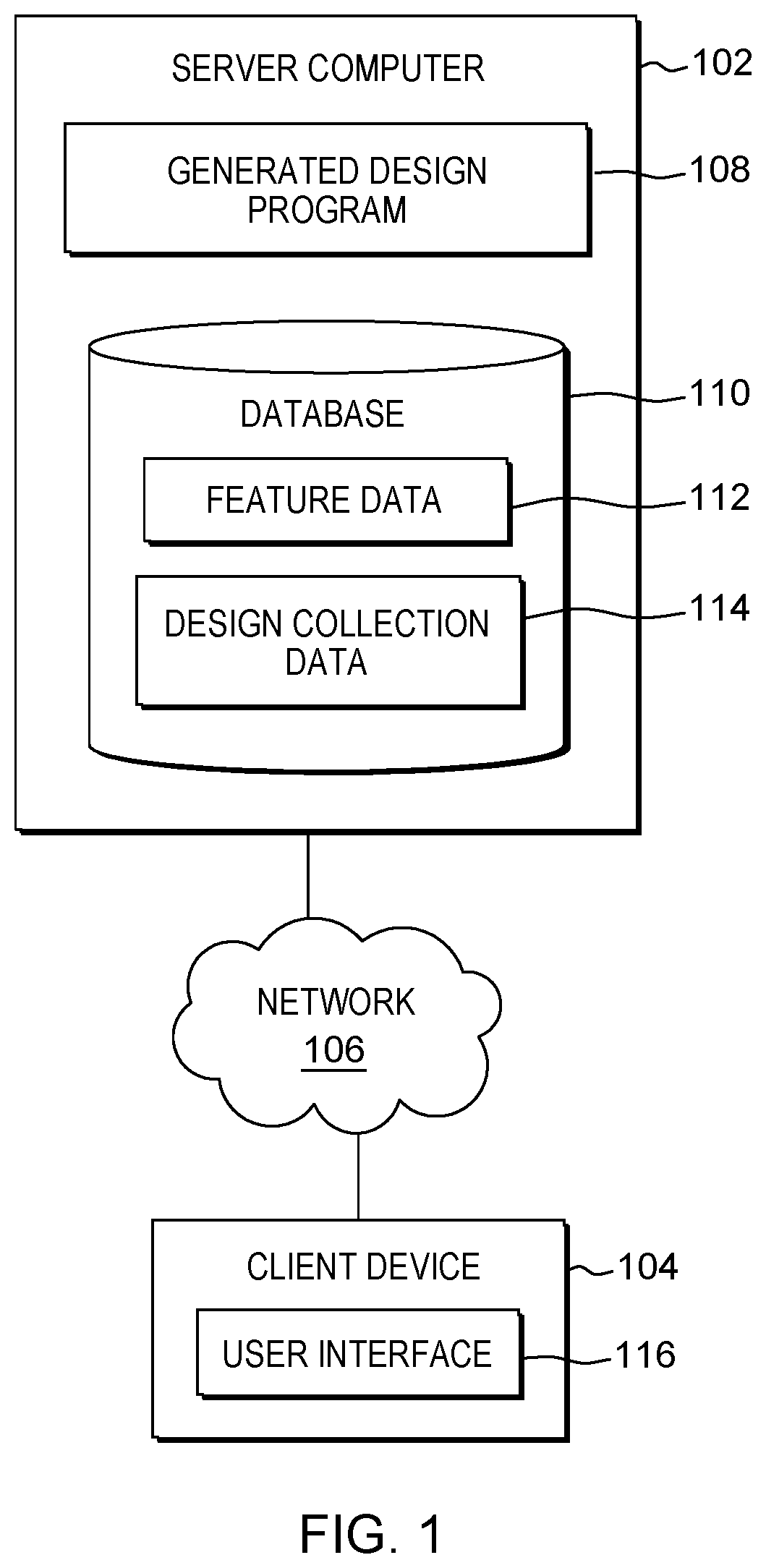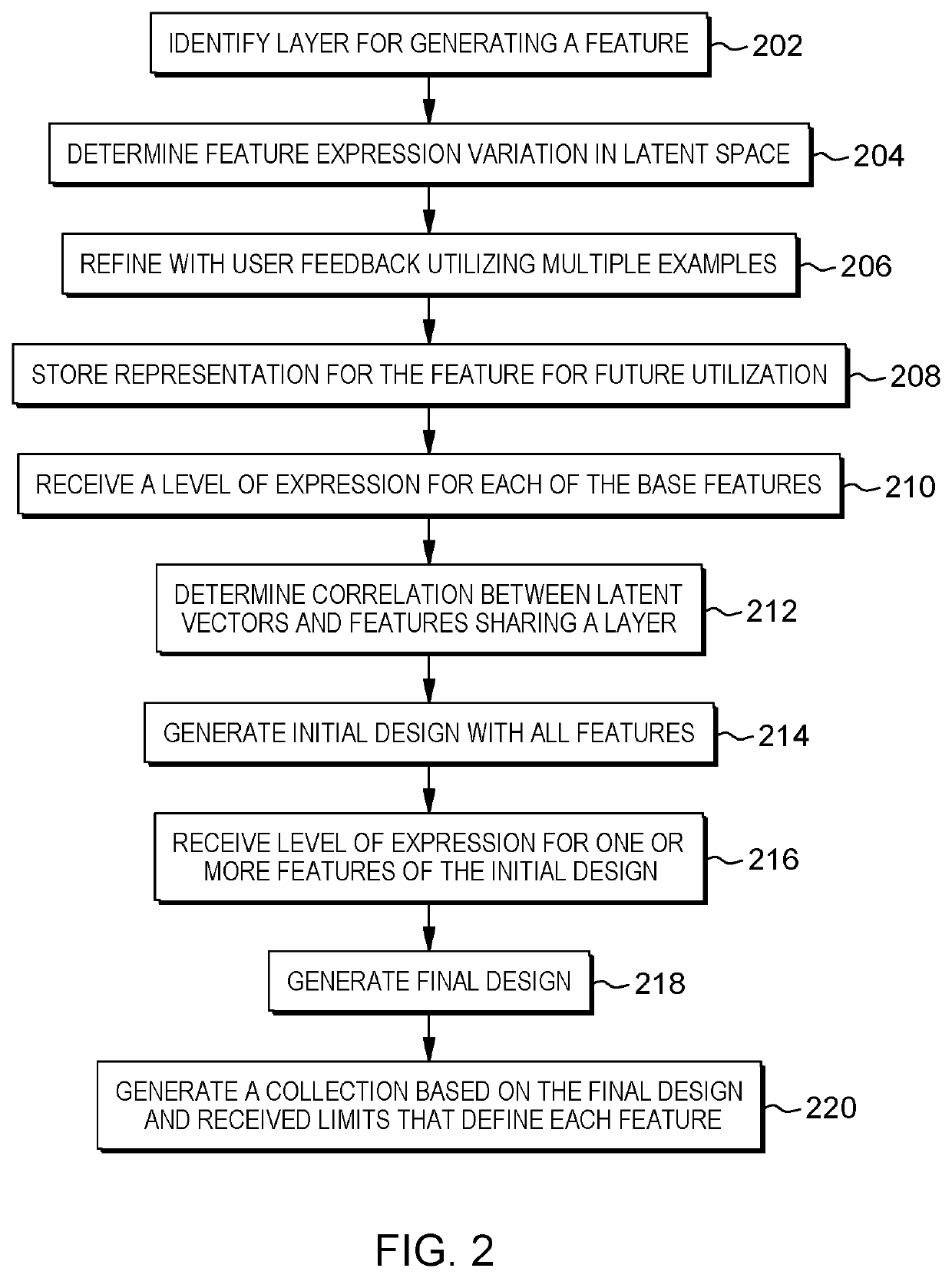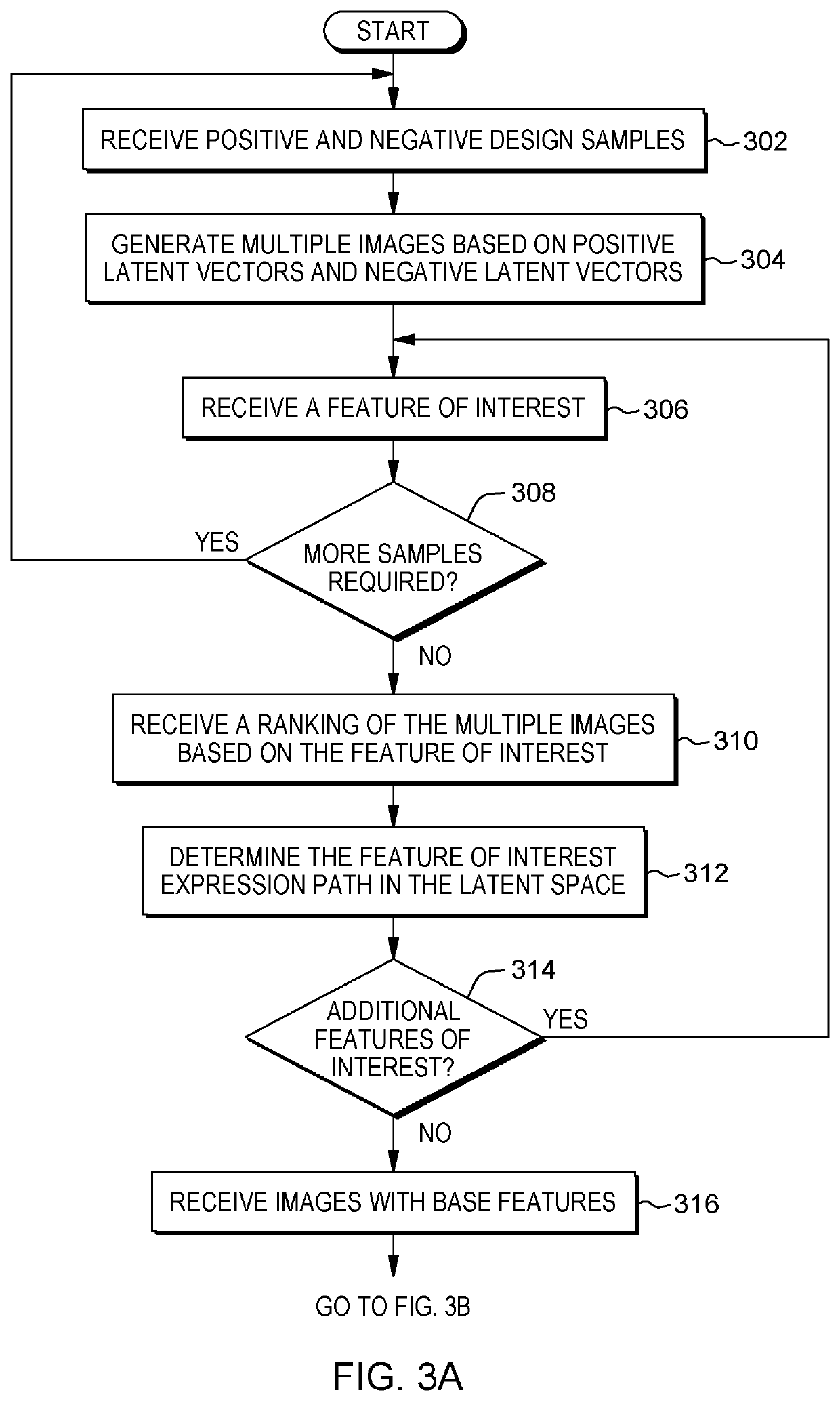Guided design generation
a technology of guided design and output data, applied in the field of design generation, can solve the problem that the gans cannot seek feedback from the user to modify the new output data, and achieve the effect of improving the user experience and improving the design quality
- Summary
- Abstract
- Description
- Claims
- Application Information
AI Technical Summary
Benefits of technology
Problems solved by technology
Method used
Image
Examples
Embodiment Construction
[0011]Embodiments of the present invention provide a method that guides generative models (e.g., generative adversarial network (GANs)) to generate designs based on user feedback, where the user interacts with the generative models by providing feature requirements without understanding the workings of latent vectors and the latent space. The user is able to provide examples (i.e., images of jewelry) that include or exclude specific features to be included in a generated design and feedback as to a level of expression for each of the specific features to be included in the generated design. Embodiments of the present invention allow for user-based interactions to generate designs with various levels of features even when multiple features are embedded in a single latent vector by querying the user about levels of expression for specific features in sample generated images. The sample images are generated from multiple single features latent vectors to allow for the user to provide f...
PUM
 Login to View More
Login to View More Abstract
Description
Claims
Application Information
 Login to View More
Login to View More - R&D
- Intellectual Property
- Life Sciences
- Materials
- Tech Scout
- Unparalleled Data Quality
- Higher Quality Content
- 60% Fewer Hallucinations
Browse by: Latest US Patents, China's latest patents, Technical Efficacy Thesaurus, Application Domain, Technology Topic, Popular Technical Reports.
© 2025 PatSnap. All rights reserved.Legal|Privacy policy|Modern Slavery Act Transparency Statement|Sitemap|About US| Contact US: help@patsnap.com



